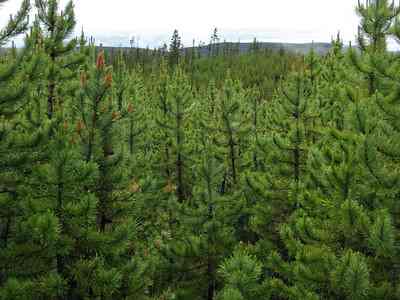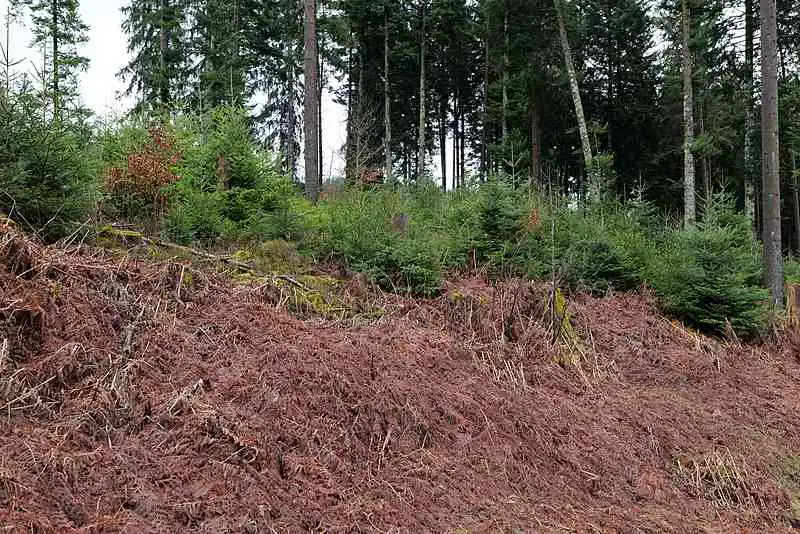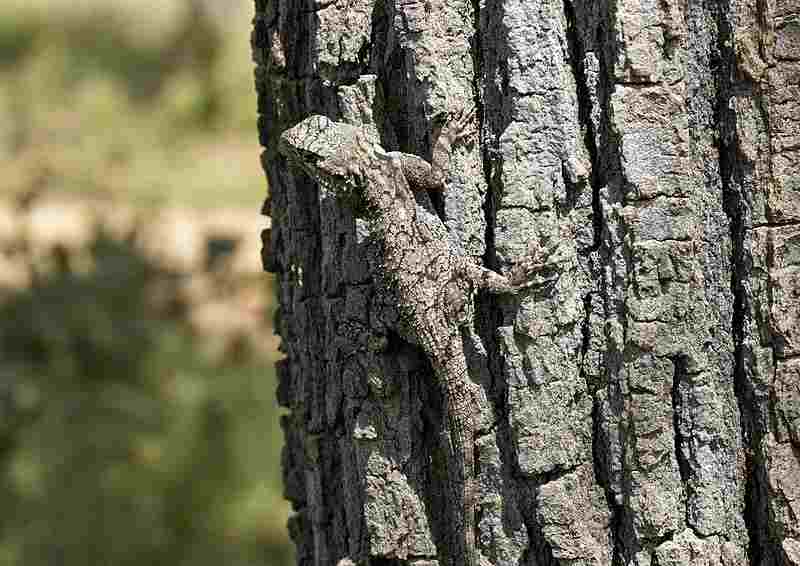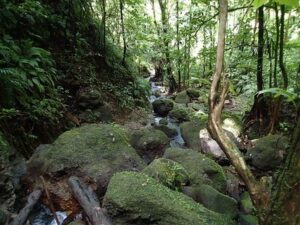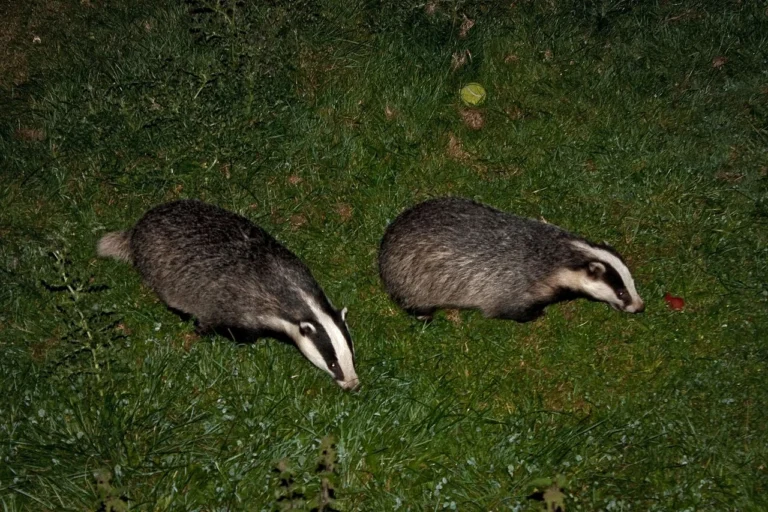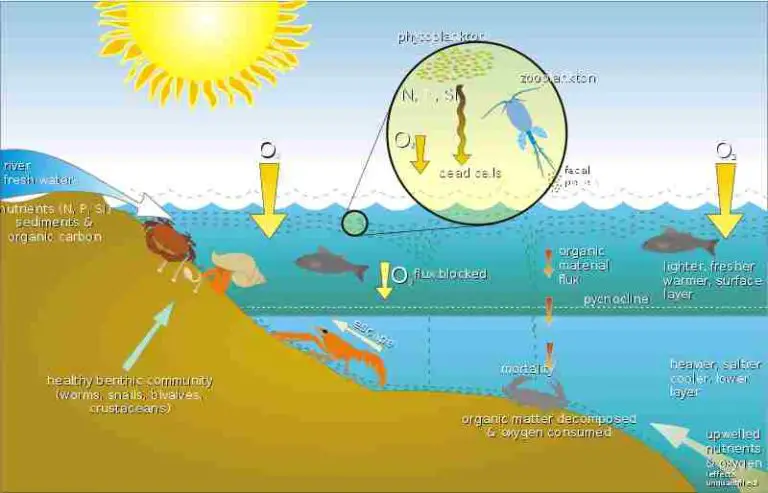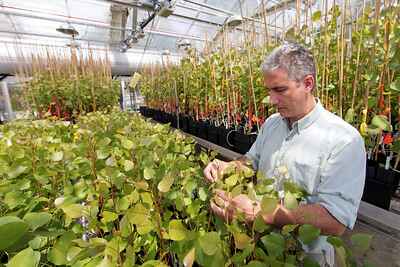5 Characteristics of the Boreal Forest Ecosystem Discussed
Characteristics of the boreal forest ecosystem are; dominance of coniferous trees, low biodiversity, climatic seasonality, acidic-infertile soil, and intricate canopy structure.
This article discusses characteristics of the boreal forest ecosystem, as follows;
1). Dominance of Coniferous Trees (as one of the Characteristics of the Boreal Forest Ecosystem)
The dominance of coniferous trees, or conifers; is a defining characteristic of the boreal forest, or taiga.
Coniferous trees are very important as biotic components of the boreal forest, and have a strong influence on abiotic factors within their environment, so that soil conditions, biomass, bioenergy, climatic conditions of the boreal forest, are all influenced by coniferous vegetation.
In turn, the coniferous trees of boreal forests are highly-adapted to the conditions of their surroundings, including the short growing/summer season, cold winter, soil conditions, and herbivorous animals, among others.
The most common examples of coniferous trees in the boreal forest include; larch, pine, fir and spruce.
Characteristics of these trees include the possession of needle-shaped leaves and distinctive metabolic patterns that help them achieve efficient water conservation.
Boreal conifers are evergreen, which means they experience very minimal senescence or leaf-shedding all year round [1]. As a result of this, their growth is optimal in spite of the fact that boreal forests receive less solar radiation than equatorial ecosystems like the tropical rainforest and savanna grassland.
The boreal forest-structure includes a canopy whose emergent layer (that is; topmost portion) comprises mostly of the crowns of coniferous trees.
In addition to their obvious importance to nutrient-recycling in the boreal forest, coniferous trees are often resistant to anthropogenic and natural hazards like wildfires, and capable of regenerating effectively in the event of such hazards.

2). Relatively-Low Biodiversity
Biodiversity in the boreal forest is low relative to other types of forests and terrestrial biomes.
This does not imply that the boreal forest is a barren ecoregion, however; as its species-richness and overall diversity significantly exceeds that of deserts, and even of some low-productivity prairies.
Reasons for the low relative biodiversity of the boreal forest are; slow ecological pace, harsh climatic conditions, minimal habitat-heterogeneity, and adaptive limitations.
Slow ecological pace of the boreal forest ecosystem implies that processes like organic reproduction, biodegradation, growth, nitrogen fixation and carbon sequestration tend to occur slowly in the boreal forest compared to other more-active ecosystems like tropical rainforests.
Because these processes lead to nutrient cycling that directly supports organic life, their slow pace allows only the most adaptive and tolerant species or individuals to survive in boreal forests.
The same can be said of the harsh climatic conditions of the boreal forest, which comprise of extensive cold winters and (relatively) brief summers. Given that summer is the main breeding/growing season in the boreal forest, its brief duration restricts the extent of organic speciation that can occur.
Minimal heterogeneity of boreal forest habitats is a very obvious characteristic that is also behind low biodiversity in the biome.
Unlike forests that are immensely diverse, many boreal forests are extensive land areas with uniform conifer-dominated vegetation. The only forms of heterogeneity that are observable include; altitudinal differences, mixed deciduous-coniferous vegetation, and aquatic micro-habitats in some boreal zones.
This means that the organisms capable of thriving in boreal forests include only those adapted to coniferous vegetation, mixed-vegetation zones, wetlands, lakes and ponds. When placed under the same climatic conditions, these micro-habitats are barely different and can hardly support species with significant variation or eco-biological complexity.
As influenced by the harshness and low variability of their environment, boreal forest animals and plants exhibit adaptive limitations, which prevent highly-diverse groups from co-habiting the terrain.
3). Climatic Seasonality (as one of the Characteristics of the Boreal Forest Ecosystem)
Another characteristic of the boreal forest ecosystem is its climatic seasonality.
Boreal forests are characterized by long, cold winters and short, cool summers [4], that account for many of the biotic attributes of these zones.
Winter in the boreal forest may extend beyond six months yearly, and features temperatures that hardly exceed -17.9°C in most cases [2].
Precipitation during this period comprises predominantly of snowfall, and most rivers, lakes and ponds in the area may also become frozen.
Daylight hours may be minimal in the winter and extensive in the summer.
The brief summer is crucial for organic activity and productivity.
Summer in the boreal features temperatures generally above 10-15°C, and sometimes may include extreme high temperature, such as in the event of heatwaves.
4). Acidic, Infertile Soil
A characteristic that establishes similarity between tropical rainforests and boreal forests is the presence of acidic, infertile soil.
The pH of boreal forest soil is generally below 6.0 [3], which indicates significant acidity.
This occurs due to slow decomposition of plant and animal matter with the release of organic acids.
Boreal forest soil is also low in fertility, as a result of leaching of nutrients by water from snow-melt or summer rainfall. Essential nutrients like potassium, phosphorus, nitrogen and calcium are displaced, leaving acidic compounds from decomposing organic matter.
The leaching of soil also causes imbalance(s) in the relative proportion of nutrients, so that the more-resistant groups like manganese and aluminum become high in concentration, while less-resistant nutrients are displaced.
In fact, the nutrient-deficiency of boreal forest soils is behind the dominance of few types of vegetation, as these are the only groups which are able to thrive on such soil.
Boreal forest plants survive by a combination of long-term evolutionary adaptation, nutrient and energy conservation, as well as symbiotic relationships.
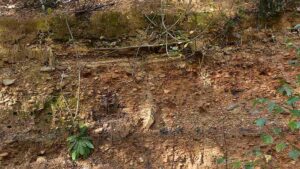
5). Intricate Canopy Structure (as one of the Characteristics of the Boreal Forest Ecosystem)
Another defining characteristic of the boreal forest is its possession of an intricate canopy structure composed mainly of coniferous vegetation.
The boreal forest features a multi-layered vegetative framework comprising of segments like the emergent layer, main canopy, and understory, all of which overlie the forest floor.
This structural framework can be used for the stratification of boreal forests, whereby the different groups of vegetation (trees, shrubs, herbaceous plants, non-vascular plants) can be linked to levels where they are most dominant.
Factors that influence the structure of any given boreal forest include the types of vegetation present, soil conditions, and maximum height as well as mass of each plant group.
In turn, the boreal forest structure influences the rate of solar penetration, and biodiversity, of this biome.
Conclusion
Characteristics of the boreal forest ecosystem are;
1. Dominance of Coniferous Trees
2. Low Biodiversity
3. Climatic Seasonality
4. Acidic, Infertile Soil
5. Intricate Canopy Structure
References
1). Batalova, A. Y.; Putinseva, Y. A.; Sadovsky, M. G.; Krutovsky, K. V. (2022). "Comparative Genomics of Seasonal Senescence in Forest Trees". Int J Mol Sci. 2022 Mar 29;23(7):3761. Available at: https://doi.org/10.3390/ijms23073761. (Accessed 4 June 2023).
2). Boonstra, R.; Andreassen, H. P.; Boutin, S.; Hušek, J.; Ims, R. A.; Krebs, C. J.; Skarpe, C.; Wabakken, P. (2016). "Why Do the Boreal Forest Ecosystems of Northwestern Europe Differ from Those of Western North America?" Bioscience. 2016 Sep 1;66(9):722-734. Available at: https://doi.org/10.1093/biosci/biw080. (Accessed 4 June 2023).
3). Calvo-Polanco, M.; Zhang, W.; Macdonald, S. E.; Señorans, J.; Zwiazek, J.J. (2017). "Boreal forest plant species responses to pH: ecological interpretation and application to reclamation." Springer, Plant and Soil 420(1-2). Available at: https://doi.org/10.1007/s11104-017-3356-0. (Accessed 4 June 2023).
4). Wang, J.; Taylor, A. R.; D'Orangeville, L. (2023). "Warming-induced tree growth may help offset increasing disturbance across the Canadian boreal forest." Proc Natl Acad Sci U S A. 2023 Jan 10;120(2):e2212780120. Available at: https://doi.org/10.1073/pnas.2212780120. (Accessed 4 June 2023).
